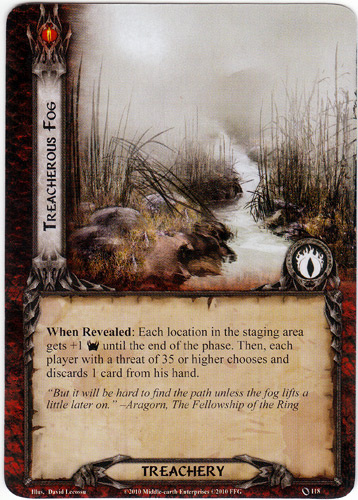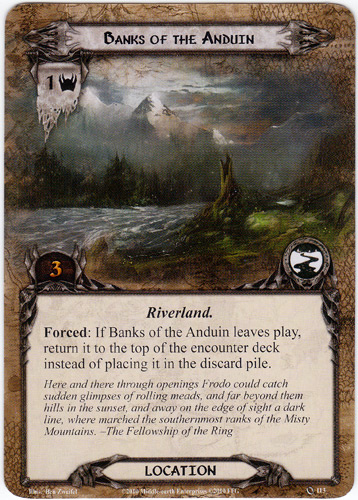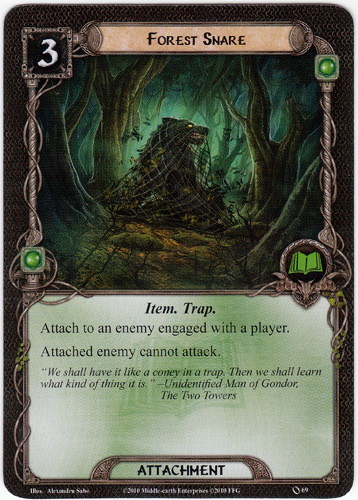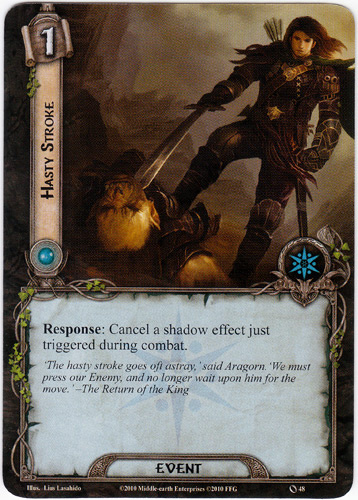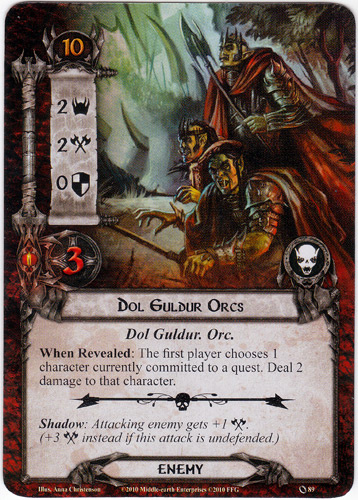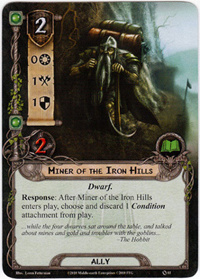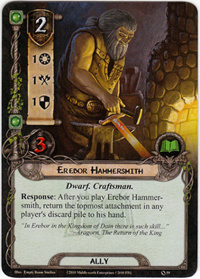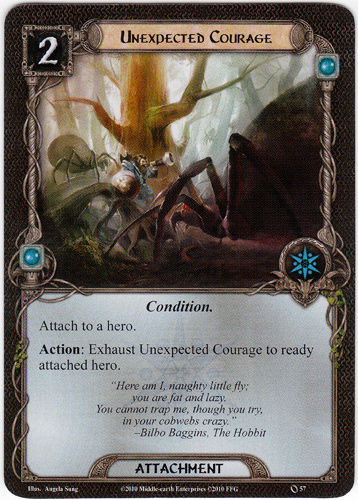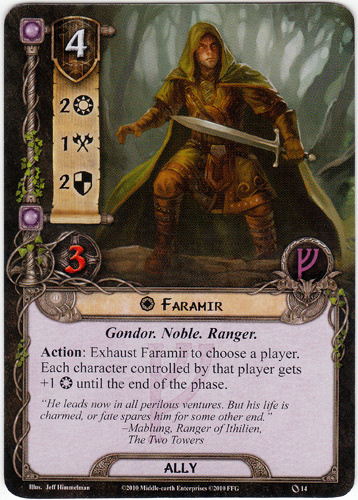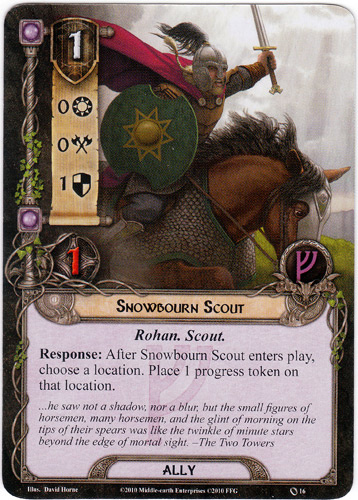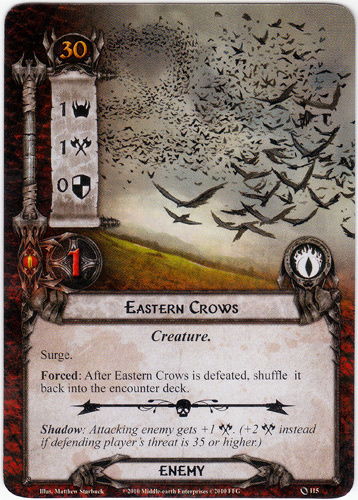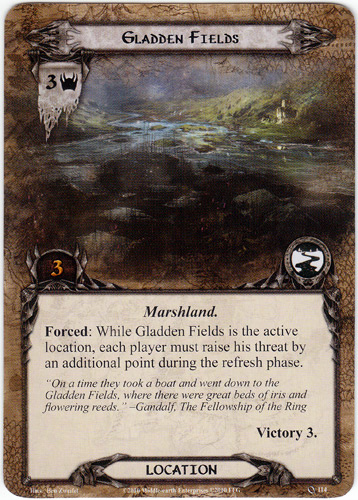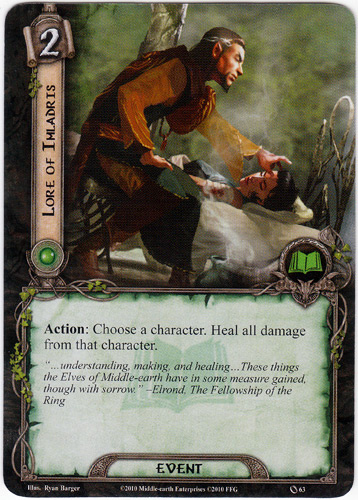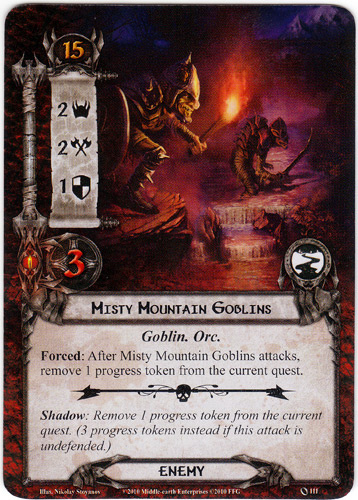Trolling Gandalf – A LoTR:LCG AAR
“I am looking for someone to share in an adventure that I am arranging, and it’s very difficult to find anyone.”
–Gandalf, An Unexpected Party, The Hobbit
What follows is an AAR of a solo game of Lord of the Rings: The Card Game.
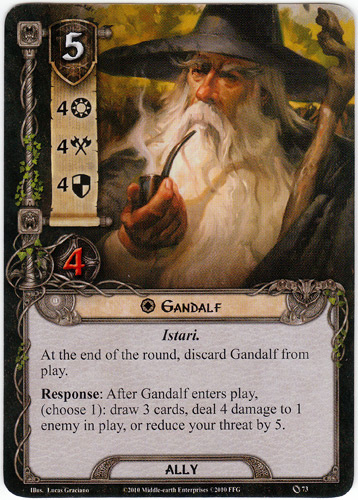
What is a Living Card Game? This is from the blog Table Top Geeks:
Living Card Games from Fantasy Flight Games are a (relatively) new style of card game that draws heavily from Collectible Card Games (CCGs) in many ways. The main difference between an LCG and a CCG is that when you buy a pack of LCG cards you know exactly what you are getting. You are purchasing a full set of cards. Otherwise LCGs still rely heavily on deck building and other familiar mechanics for any CCG players. The best part about this is it means you will spend far less on an LCG and will be able to have all of the cards without any luck involved.
How Does LoTR:LCG work? The rules book is 25 pages long but that does not mean its complex; rather, it means the rules book is thorough and full of examples. Actually the game is relatively simple once you get the hang of it. An overview, from the rules book:
In each game of The Lord of the Rings: The Card Game, players begin by choosing a scenario, and then work together in an attempt to complete it. A scenario is completed by successfully moving through all stages of the quest deck. During a scenario, the encounter deck aims to harm the heroes and to raise each player’s threat level. A player is eliminated from the game if all of his heroes are destroyed, or if his threat level reaches 50. If all players are eliminated from the game, the players have lost. If at least one player survives and completes the final stage of the quest deck, all players
are victorious.
Threat level is key. You have to get through all stages of the quest before your heroes die, or before you hit a 50 threat level.
If you want to learn by watching, here are FFG’s tutorials. and here are Rodney Smith/Watch It Played’s tutorials.
While you don’t need to know the rules to follow this AAR, knowing the phases of each round helps. They are:
**The seven phases are, in order:**
- Resource – Draw a new card for your hand, add resource tokens (cash) to heroes
- Planning– Spend resource tokens to add Allies and Attachments to your questing party
- Quest– Commit certain members of your party to advancing in the quest
- Travel– Advance to a new location if possible
- Encounter– Members of your party who are not committed to quest may engage with enemies and creatures
- Combat– Resolve combat from engaged creatures and enemies
- Refresh– Advance threat level, ready members of your party who have survived
The base game comes with four preconstructed decks and three adventures. In addition, there are already numerous expansions and fan-made adventures.
There is a widespread belief that you need to buy expansions, or a second copy of the base game, in order to construct a decent deck. That may be true, but I found on Boardgame Geek a fan-made deck using just one copy of the base game that is fairly decent. This AAR uses that deck.
In LoTR:TCG, each player has one deck, and each deck includes three heroes, whose questing and battling are aided by allies. (Gandalf is not a hero, but an ally). In this deck, my heroes are Theodred, Eowyn and Beravor.



The brave trio are traveling a Journey Down the Anduin that is both dangerous and untested. They know it will challenge them, and they hope to enlist the aid of allies along the way. Only then will they have a chance at success, indeed, even of survival.
Emerging from Mirkwood Forest with an urgent message for Lady Gladeriel, you must now make your way south along the Anduin River in order to reach the forest of Lorien, As you leave the forest behind, you notice that you are being pursued, and this quicken you pace.
As you approach the location of a small raft stashed on the riverbank, a fearsome Hill Troll emerges from behind a grouping of rock, and attacks!
This is the second of three quests that comes withe core game. It is considered to be the most difficult. As you’ll note from the card above, the initial set-up for this quest requires you to place one mean ass Troll in the staging area.
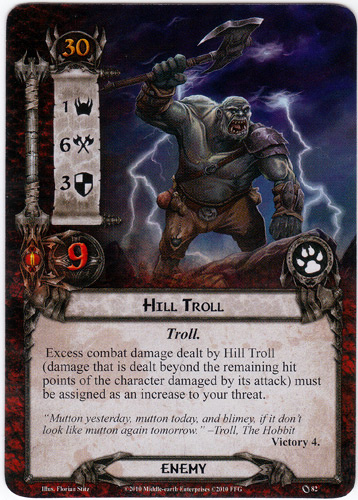
The troll is in the staging area only, which means our intrepid party does not need to battle it. However the troll will automatically engage (fight) the party when the threat level of the player reaches the top number on the card – in this case, 30. (We can, optionally choose to engage sooner, but if the threat is 30, the troll does battle. The starting threat level is the total willpower of our three heroes (also the topmost number on their cards), in this case 27. As the threat increases by one each turn, that means we have only three turns before the troll moves out of the staging area to do battle.
Our initial deal of six cards yields three potential allies, Gandalf (pictured above) along with Erabor Hammership and Miner of the Iron Hills. The top number is their cost to summon:
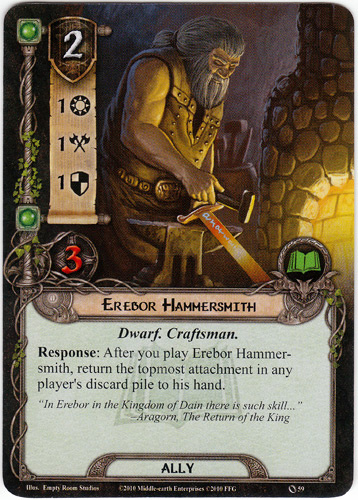

My initial deal yields one attachment card – an item to buff your heroes or allies – the Steward of Gondor:
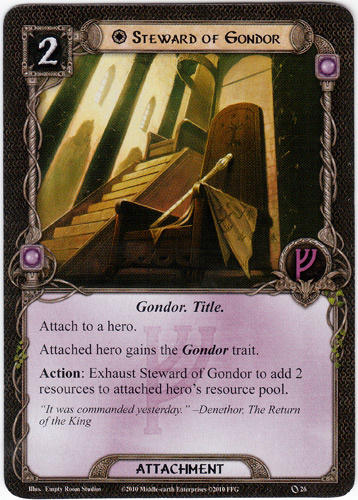
This attachment is a money-making machine: tap it once a turn to add two resources to the owner’s purse.
The remaining two cards in the initial deal are events, which can be played at virtually any time, if you have sufficient resources. The two we receive are: For Gondor! and Hasty Stroke. We’ll discuss those when we are able to play them. For now, though, on to our adventure!

